Our planet’s oceans are home to countless marvels, and one of its most captivating creatures is the sea turtle. These ancient marine reptiles have existed for millions of years, gracefully navigating the vast expanses of the sea. As beach enthusiasts, it is our responsibility to ensure that our presence does not disrupt the delicate balance of their habitat. By becoming sea turtle-friendly beachgoers, we can enjoy these magnificent creatures while actively contributing to their conservation.
Today, Florida mom of two and marine biologist Bethany Augliere will delve into the essential practices and guidelines for observing sea turtles responsibly. We will explore how to create a safe environment for nesting females, safeguard hatchlings during their journey to the sea, and promote the overall well-being of these fascinating creatures. Additionally, we will discuss various ways to respectfully view sea turtles without causing harm or distress. Whether you are a dedicated conservationist or a curious beach lover, this post will equip you with the knowledge and tools necessary to protect and appreciate sea turtles in their natural habitat.
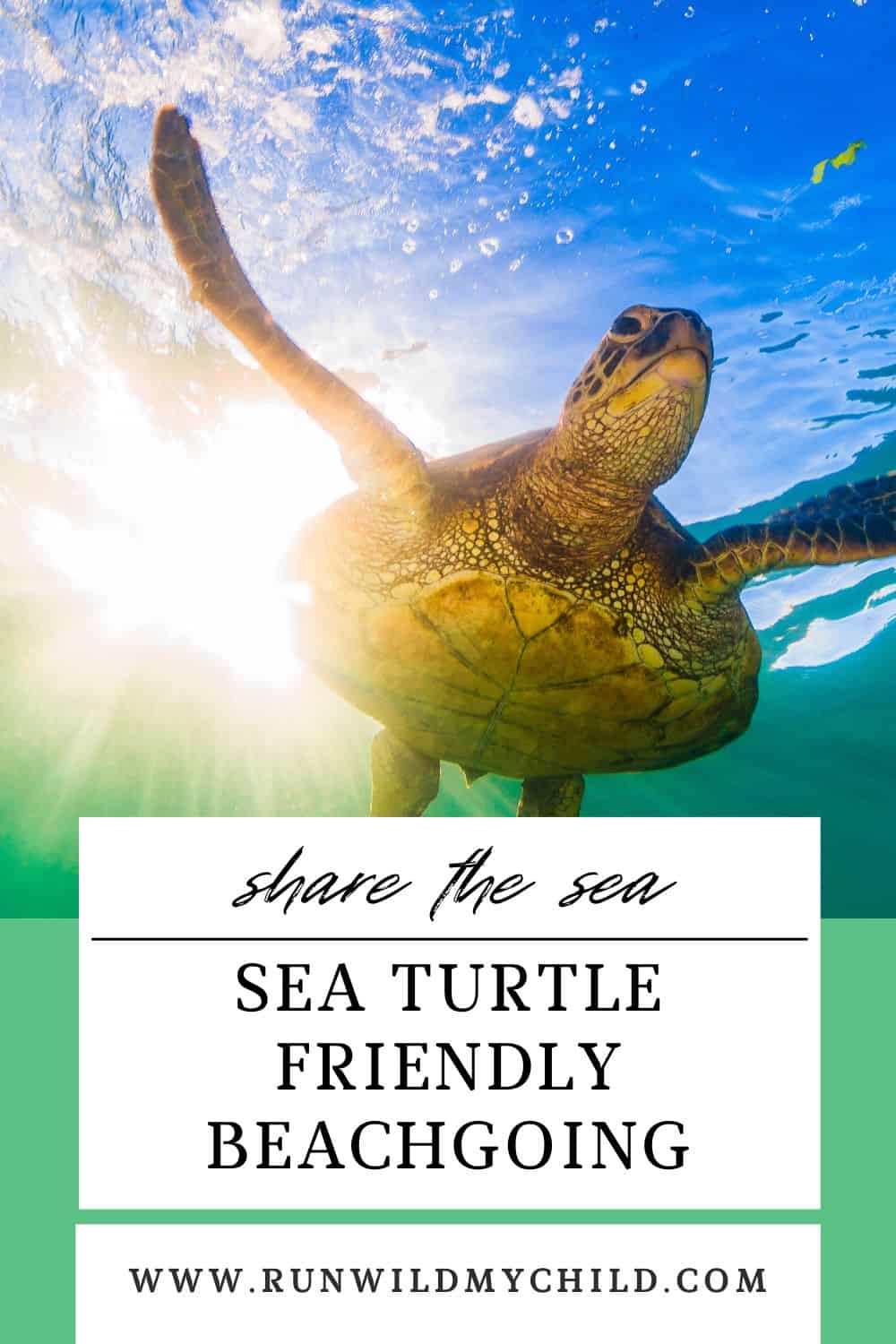
Be a turtle-friendly beachgoer
As the weather warms, families flock to the beaches to splash in the waves and dig in the sand. But, there’s another shore visitor — sea turtles, and they need our help to remain safe. Today, I’ll share with you some information about how to be a sea turtle-friendly beachgoer, and some ways you can responsibly view them. Let’s dive into the world of sea turtle-friendly beachgoing and discover how we can make a positive impact while enjoying these remarkable creatures in their stunning marine homes.
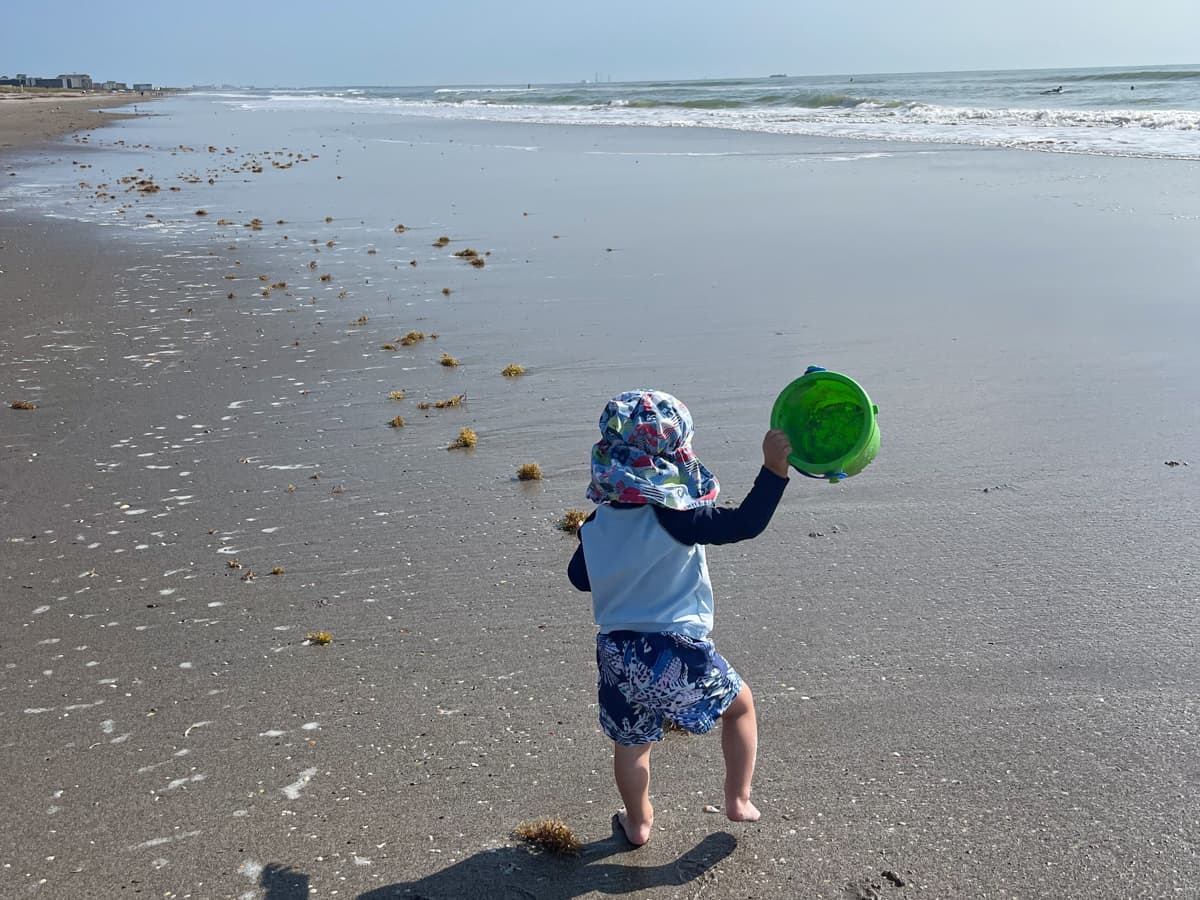
All about sea turtles
Sea turtles are marine reptiles adapted for life in the ocean. Though they require surfacing for air to breathe, some species can dive for more than an hour and up to 4,000 feet beneath the surface, swimming with their powerful flippers. Sea turtles play a crucial role in maintaining the health of marine ecosystems. As they feed on sea grass and jellyfish, they help keep the balance in the ocean by controlling the population of these organisms.
Seven species of sea turtles inhabit the Earth’s oceans: loggerhead, leatherback (the largest) green turtle, hawksbill, Kemp’s ridley (the smallest), olive ridley, and flatback. All but the flatback live in United States waters, and all six are listed on the U.S. Endangered Species Act. Unfortunately, sea turtles face threats due to humans from entanglement in fishing gear and marine debris, poaching of adults and eggs, pollution, vessel strikes, and habitat destruction.
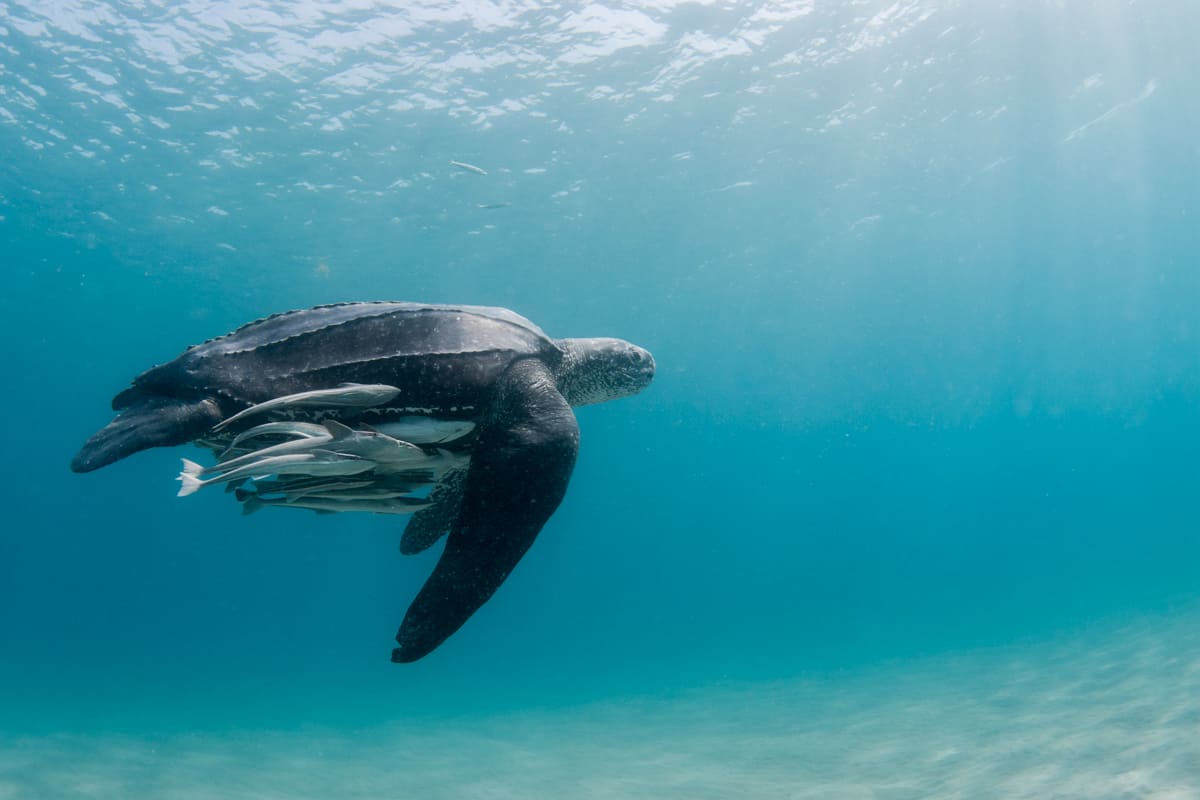
A female leatherback sea turtle swims along the shore in South Florida.
Sea turtle nesting season
Females return to shore to lay eggs, often making long journeys to go to specific beaches year after year. While sea turtles nest around the U.S., including the southeast from about March to November and Hawaii from mid-April to September, 90% of nesting takes place in Florida. Large numbers of greens, loggerheads, and leatherbacks crawl ashore to lay their eggs. Two other species – Kemp’s ridley and hawksbill – also nest in Florida, but in very small numbers.
As the sun sets, a female turtle makes her way up the beach from the sea, dragging her heavy body through the sand. Having watched nesting turtles many times for work, it looks exhausting — I feel for those moms. Every so often, a turtle will begin nesting early in the morning at sunrise, but it’s less common.
Once she finds a suitable spot in the dry region of the beach, the female turtle digs a body pit, flinging sand with her flippers and shuffling her body. When the pit is ready, she works on the hole for the eggs, called a nesting chamber. She scoops out the sand with her back flippers and then enters a trance-like state once she begins to drop 80 to 150 ping pong-sized eggs, depending on the species.
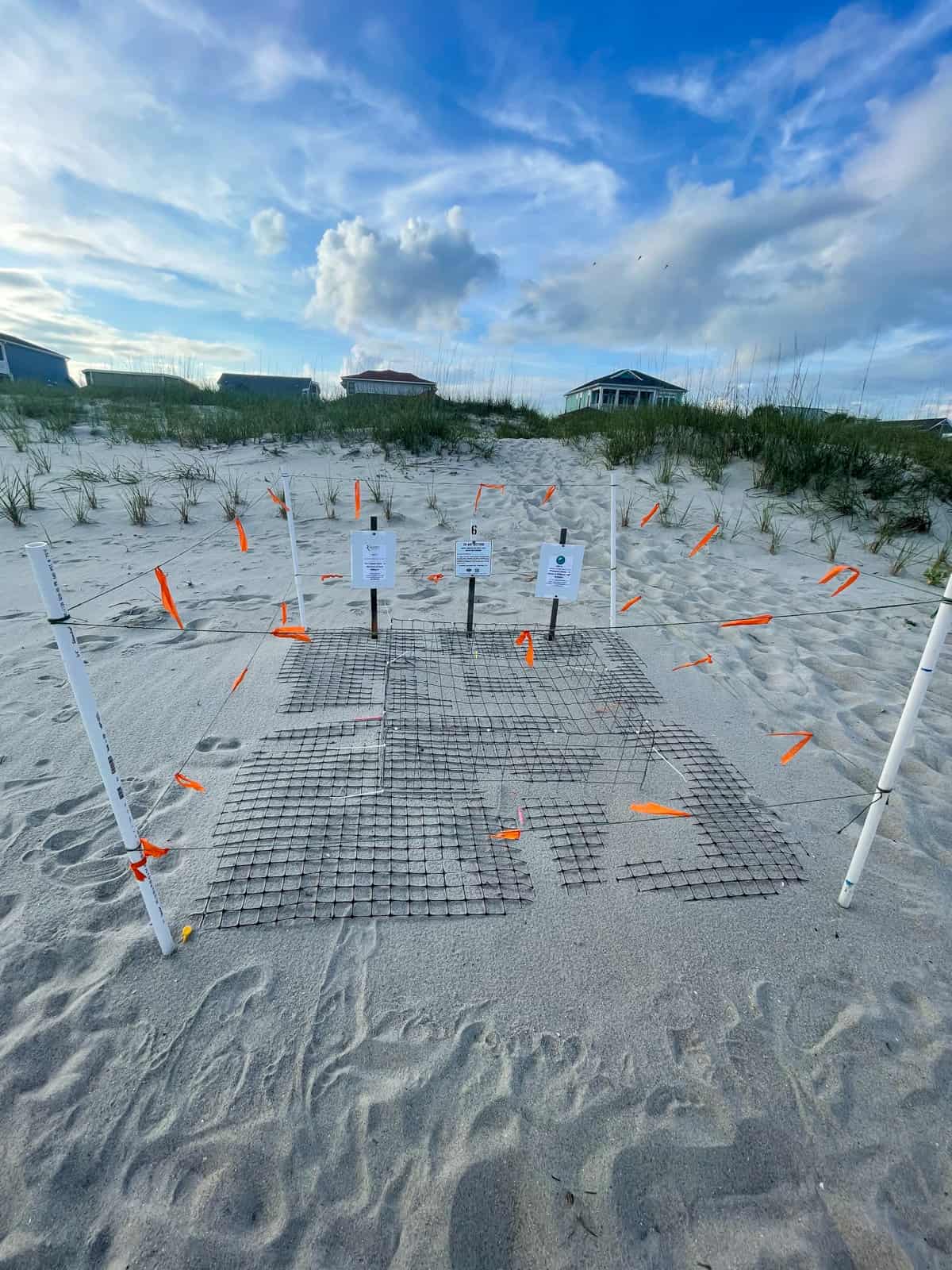
A sea turtle nest in Ocean Isle Beach, NC.
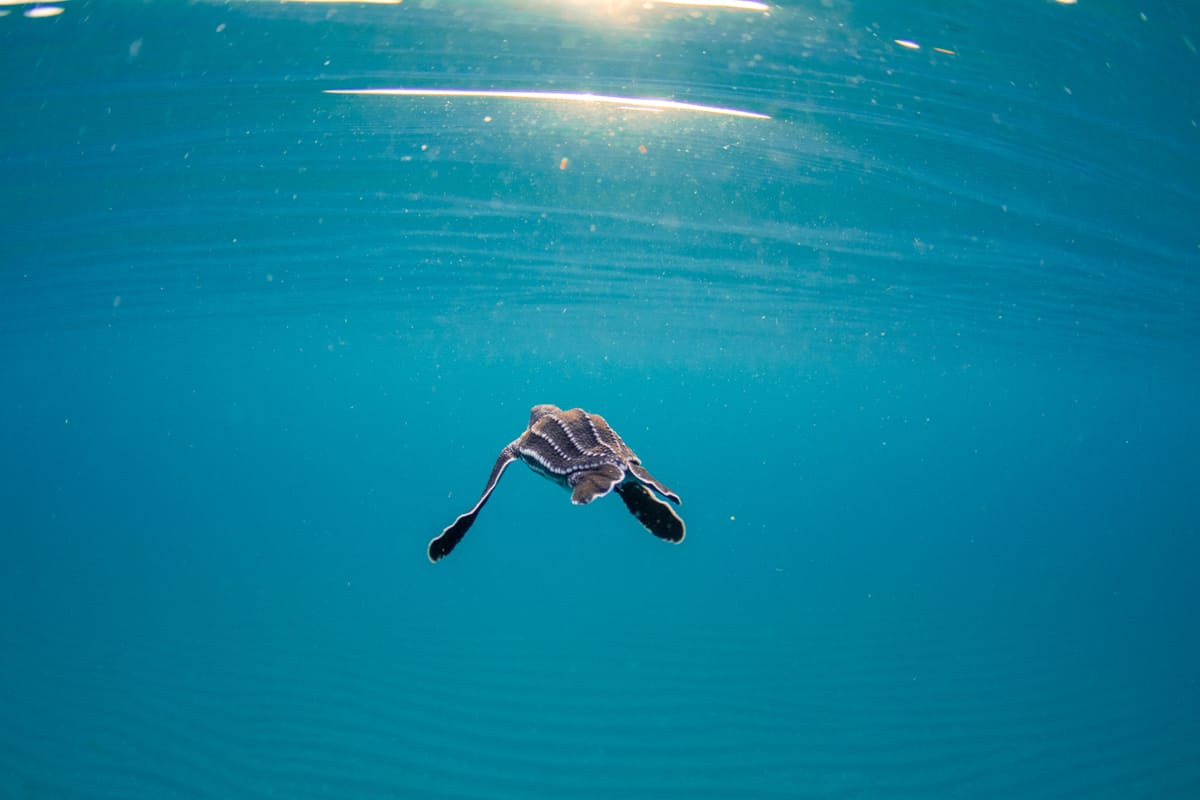
A leatherback hatchling swims out to sea after emerging from the nest.
Hot chicks, cool dudes
About 60 days after the eggs are laid, depending on the temperature of the sand and other environmental conditions, the hatchlings emerge and crawl to the sea, usually under cover of darkness, which offers protection from predators.
Warmer temperatures during a sea turtle nest’s incubation tend to produce female hatchlings. Cooler temperatures, which can result from rainfall or shade from a building or a tree, tend to produce eggs that will become males.
This means global temperatures and climate change could impact future populations of turtles. For instance, one turtle hospital in Florida has documented only female hatchlings for the last 4 years, which have also been the hottest years on record. Similarly, a 2018 study showed that 99% of turtles who originated from the warmer, northern region of the Great Barrier Reef in Australia were females.
Tips for helping sea turtles nest safely
With climate change, habitat loss, and other threats already present, it’s our job to be educated and responsible visitors to the beach to minimize our impact. The journey is not easy for the nesting females or hatchlings. So, here are a few guidelines to ensure you are not disrupting safe passage for the turtles.
1. Respect nesting areas
Sea turtles typically choose sandy beaches with suitable conditions for nesting. Look for areas with soft, undisturbed sand above the high tide line. Nests are often marked by tracks leading from the ocean to the nesting site, resembling a series of comma-shaped depressions left by the turtle’s flippers. Many beaches with known sea turtle nesting activity will have signs or barriers indicating the presence of nests. Respect these signs and avoid entering or disturbing the designated nesting areas. These signs help protect the eggs and ensure the safety of the nesting females.
Be aware of marked nesting areas on the beach and avoid walking or setting up beach equipment in these designated zones. Keep a safe distance from nests and do not disturb or touch them. Dispose of trash properly and never leave any items, such as plastic bags or food containers, on the beach. Sea turtles can mistake litter for food, which can lead to serious health issues if ingested.
2. Lights out
Artificial lights can disorient nesting females and hatchlings, leading them away from the ocean. If you are living or staying at a beachfront property, keep lights off while not in use and close your blinds at night to avoid adding to the overall sky glow. Avoid the use of unshielded outdoor lighting fixtures.
Be mindful of using flashlights or even your phone when walking the beach at night. Sea turtles use moonlight for guidance when nesting and hatching, and lights and flash photography can confuse them and even cause them to move near parking lots and streets, or wander in circles and waste precious energy.
If you want some sort of light, use turtle-friendly lighting that is low in intensity, directed downward, and shielded from the beach. Using long wavelength light, which appears amber or red, will prevent sea turtle disorientations. Many phones have an option for nighttime or dark mode that produces less blue light.
3. Do not disturb
If you see a nesting female (or hatchlings), be sure not to disturb her, which could cause her to stop laying eggs and return to the ocean. Keep a respectful distance to avoid causing any distress or disruptions. Observe quietly and from a distance. Remember, the priority is to provide a safe and quiet environment for the turtles.
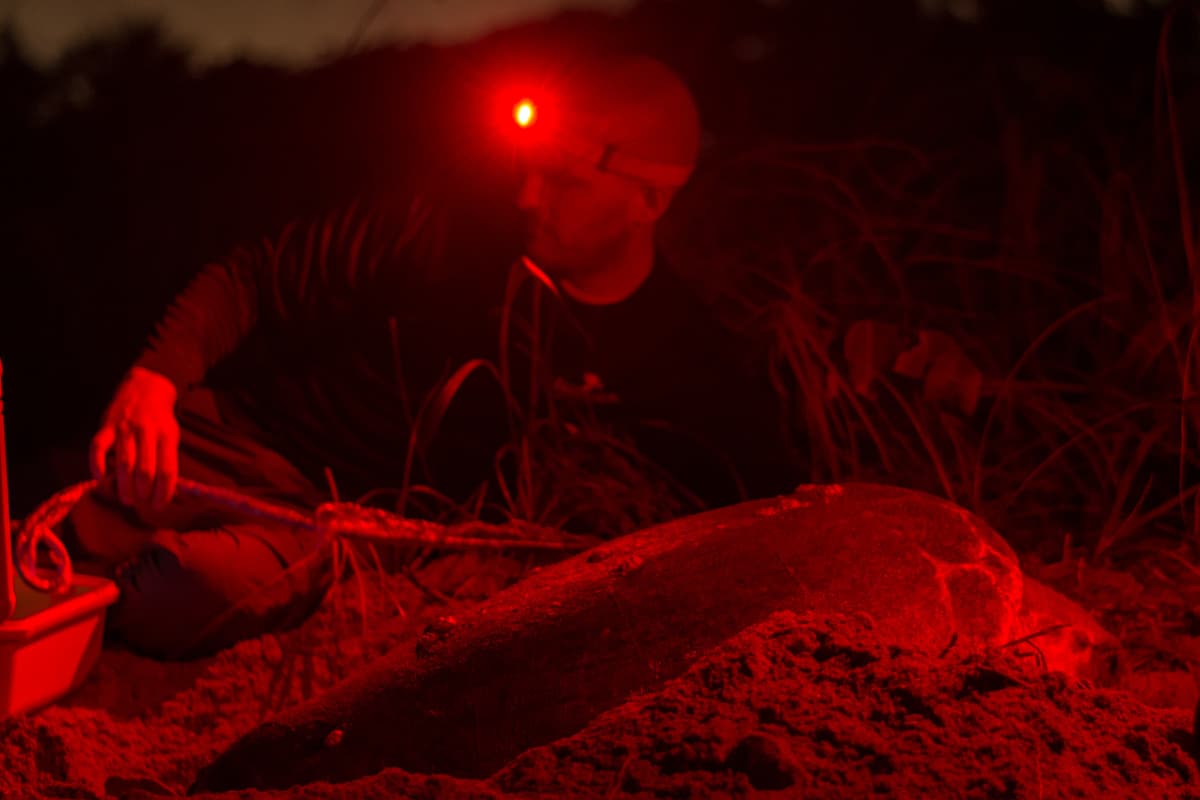
Justin Perrault, Ph.D., a scientist from Loggerhead Marinelife Center, studies a nesting sea turtle on a beach in South Florida.
4. Leave No Trace
Dispose of trash properly and never leave any items, such as plastic bags or food containers, on the beach. Sea turtles can mistake litter for food, which can lead to serious health issues if ingested. Before leaving the beach, fill in any holes or flatten sandcastles. These obstacles can impede nesting females and cause hatchlings to become trapped or disoriented on their way to the sea. Remember to grab your toys and buckets, and any beach chairs or umbrellas, too!
If you want to help marine life even further, bring a grabber and a bucket and clean up trash as part of your family beach activity. Children can understand that even small actions can make a big difference in sea turtle conservation. Picking up trash, reducing plastic use, and spreading the word about protecting sea turtles can have a positive impact on their survival. Every little bit helps.
5. Avoid balloons
Did you know that balloons pose a significant threat to sea turtles and other marine life? Balloons that are released into the air can end up in the ocean, where they are often mistaken for food by sea turtles. Sea turtles are known to mistake balloons for jellyfish, which are a common part of their diet. When sea turtles consume balloons, they can cause serious internal injuries or blockages. This can lead to malnutrition, organ damage, and even death. Balloons and their attached strings can also entangle sea turtles, causing them physical harm. The strings can wrap around their flippers, necks, or internal organs, leading to injuries, infections, or impairing their ability to swim and feed.
To protect sea turtles and the marine environment, it is crucial to avoid releasing balloons into the air. Instead, opt for environmentally friendly alternatives for celebrations or events, such as using reusable decorations, bubbles, or kites. By making conscious choices, we can reduce the risk of harm to sea turtles and preserve the health of our oceans.
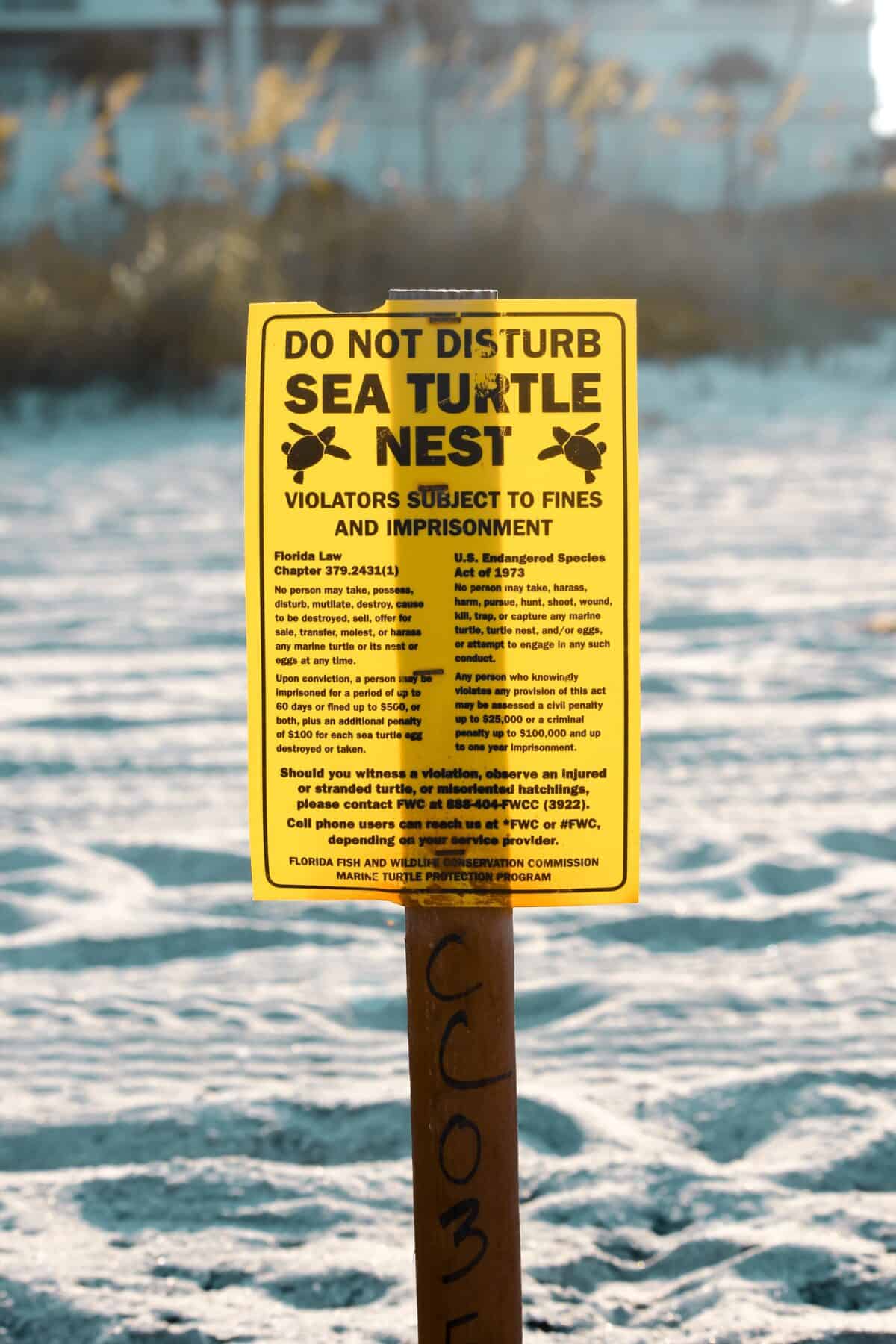
Who to call for wildlife emergencies
If you come across a nesting sea turtle or notice any signs of nesting activity, report it to the local authorities or sea turtle conservation organizations. They can provide assistance and monitor the nests to ensure proper protection. It’s also good to know the local numbers for sea turtle and other marine wildlife emergencies if you happen upon an injured or stranded turtle. A quick Google search for the state and sea turtle emergency will often bring up the right number. Here are a few:
- Florida: Call Florida Fish and Wildlife Conservation Commission hotline — (888) 404-3922
- Georgia: Call DNR’s hotline — (800)272-8363
- Hawaii: Call NOAA’s stranding response hotline — (888) 256-9840
- Maryland: Call DNR’s hotline — (800) 628-9944
- South Carolina: Call SCDNR’s 24-hour hotline — (800) 922-5431
Ways to safely view and interact with sea turtles
If you are interested in seeing sea turtles in the wild, including nesting females or hatchling releases, many nonprofit organizations and sea turtle hospitals offer guided nighttime walks. You can also visit a facility that houses or rehabilitates sea turtles to see them up close.
Some beaches offer organized sea turtle watch programs led by trained volunteers or conservation organizations. These programs provide educational opportunities to observe nesting turtles while following strict guidelines to ensure the turtles’ safety.
One of my favorite places to view turtles in South Florida is Loggerhead Marinelife Center (LMC), a sea turtle research, rehabilitation, education, and conservation center located in Juno Beach, Florida. Kids can view turtle patients up close while taking a walk through the public outdoor sea turtle hospital and learn about their rescue event to, their diagnosis, rehabilitation process, and release plan from the volunteers and staff.
Some conservation organizations offer “adoption” programs where kids can symbolically adopt a sea turtle. This provides a fun and educational way to learn more about sea turtles while supporting their conservation efforts.
In addition to helping save sick and injured turtles, LMC also conducts scientific studies on health, disease nest success, and more to aid in conservation and management efforts.
Here’s a list from the Florida Fish and Wildlife Conservation Commission that lists public walks and hatchling releases from other organizations and facilities.
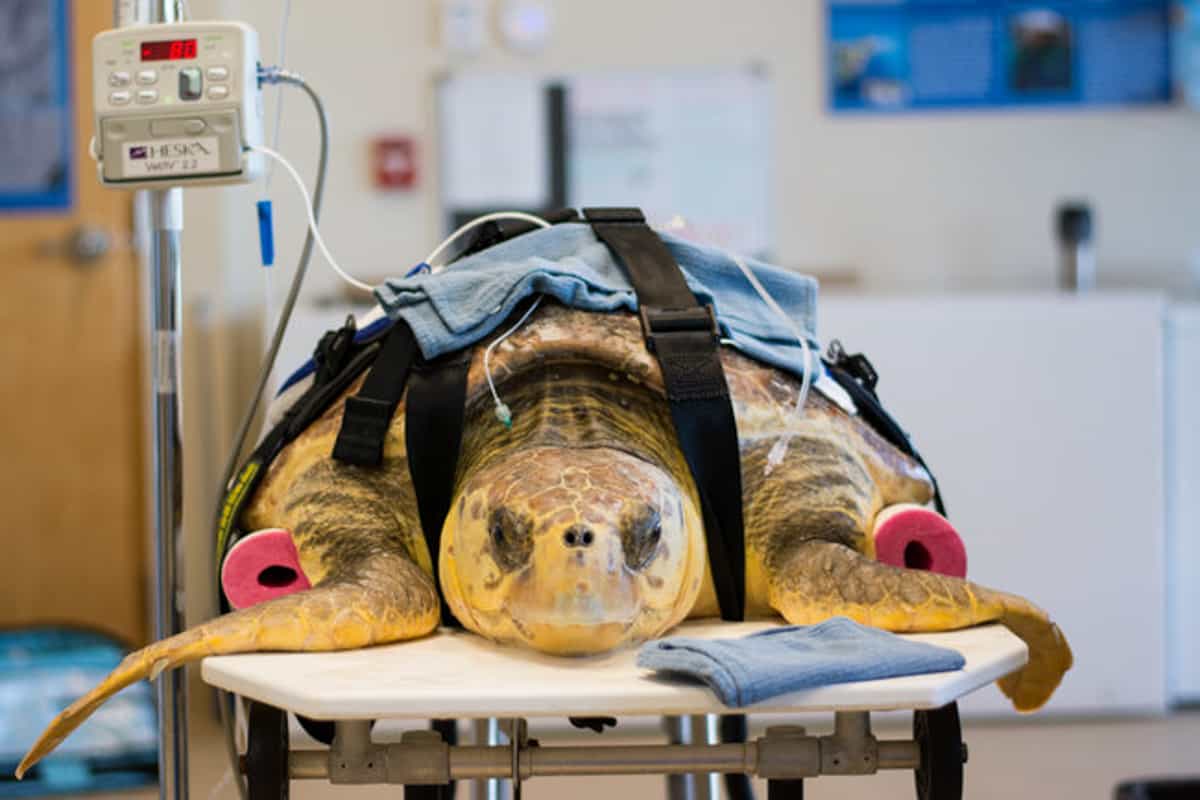
A loggerhead sea turtle receiving treatment at Loggerhead Marinelife Center in Juno Beach, Fla.
Books about sea turtles for kids
- National Geographic Readers: Sea Turtles by Laura Marsh
- Follow the Moon Home: A Tale of One Idea, Twenty Kids, and a Hundred Sea Turtles by Philippe Cousteau
- Ranger Rick: I Wish I Was a Sea Turtle by Jennifer Bové
- Chase the Moon, Tiny Turtle: A Hatchling’s Daring Race to the Sea by Kelly Jordan
- Adventures in the Deep Blue Sea by Ann Taylor
- Yoshi, Sea Turtle Genius: A True Story about an Amazing Swimmer by Lynne Cox
- Flip Flap Wiggle: A Hatchling’s Journey From Sand to Sea by Robyn Hartley
- Sea Turtles by Gail Gibbons
- I’ll Follow the Moon by Stephanie Lisa Tara
Help protect the sea turtles
In conclusion, being a conscientious beachgoer is essential for the protection and conservation of sea turtles. Remember, every action, no matter how small, counts in the grand scheme of sea turtle conservation. By becoming conscientious beachgoers and actively engaging in efforts to protect and conserve sea turtles, we can ensure that these ancient marine reptiles continue to grace our oceans for generations to come. Let us cherish and safeguard their presence, embracing our responsibility as stewards of the sea. By following a few simple guidelines, we can make a positive impact and ensure the well-being of these magnificent creatures.
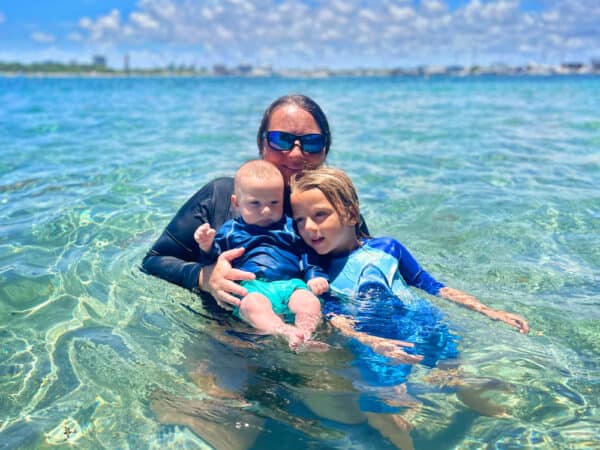
About the author
Bethany Augliere is a marine biologist, conservationist, and storyteller. She has always been inspired to encourage people to fall in love with nature and explore their own backyard, in hopes of instilling a desire to help protect the Earth and its creatures — especially the ocean. Her work has brought her eye-to-eye with giant tiger sharks, playful dolphins, curious manta rays, and gentle manatees. Now, as a mom, she aspires to share those adventures with her family, whether it’s kayaking in the Everglades or searching for shark teeth on the beach.
You can find more from Bethany online in the following locations:
Instagram: @wilder_seas
Facebook: @bethanyaugliere
Website: www.bethanyaugliere.com
RWMC posts: Bethany Augliere







